"American Soldiers Are Dropped off by Helicopter to Join Southern Vietnamese Ground Troops," AP Images, March 1965
BREAKING THE BARRIER OF FEAR
The University challenged their students to think, explaining, the “University of Wisconsin should ever encourage that continual and fearless sifting and winnowing by which alone the truth can be found” (Wisconsin Board of Regents 1894). However, when business got involved, the University put aside their values and promoted a “thinly veiled attempt to intimidate the protest movement” (Why Amnesty?, 1).
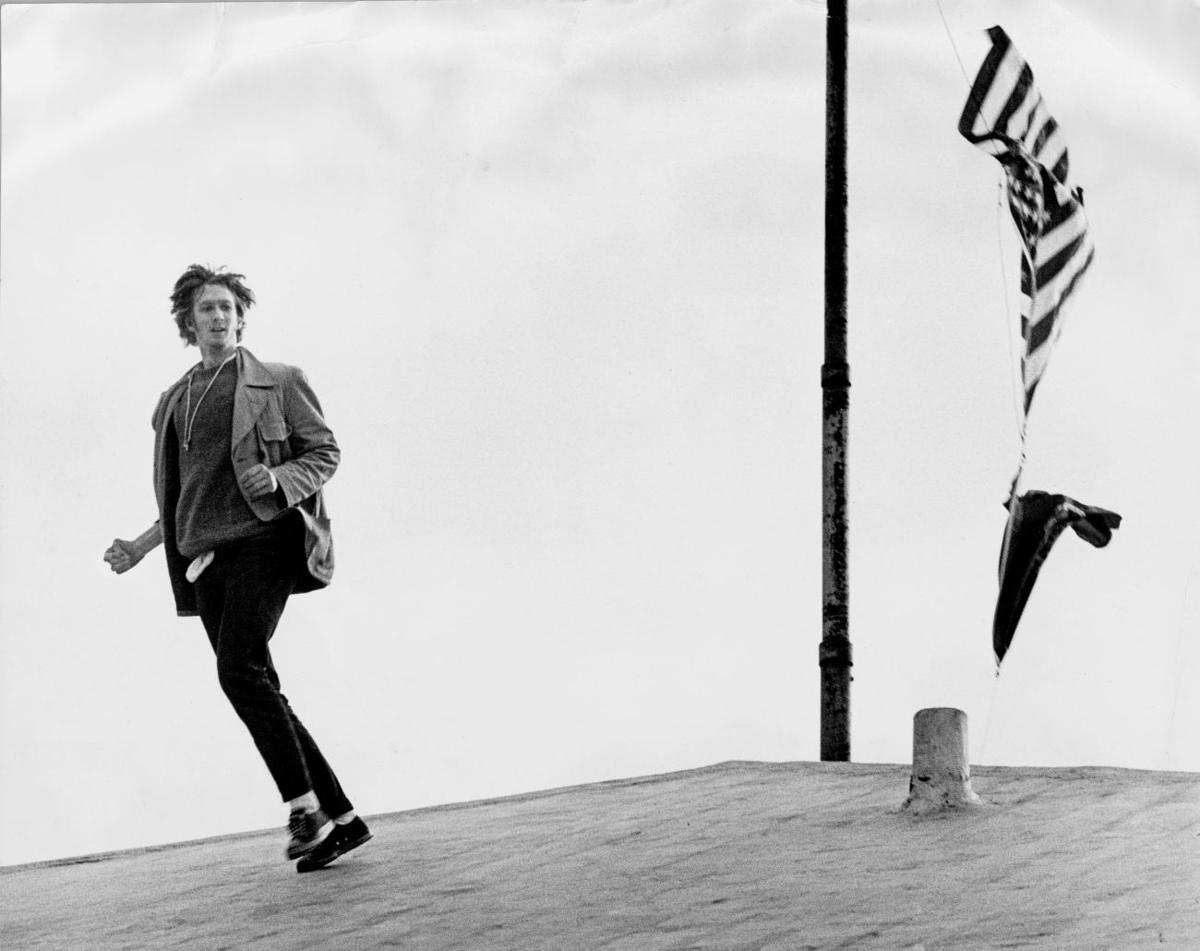
"Pulling Down Flag from Bascom," Wisconsin Historical Society, October 18, 1967
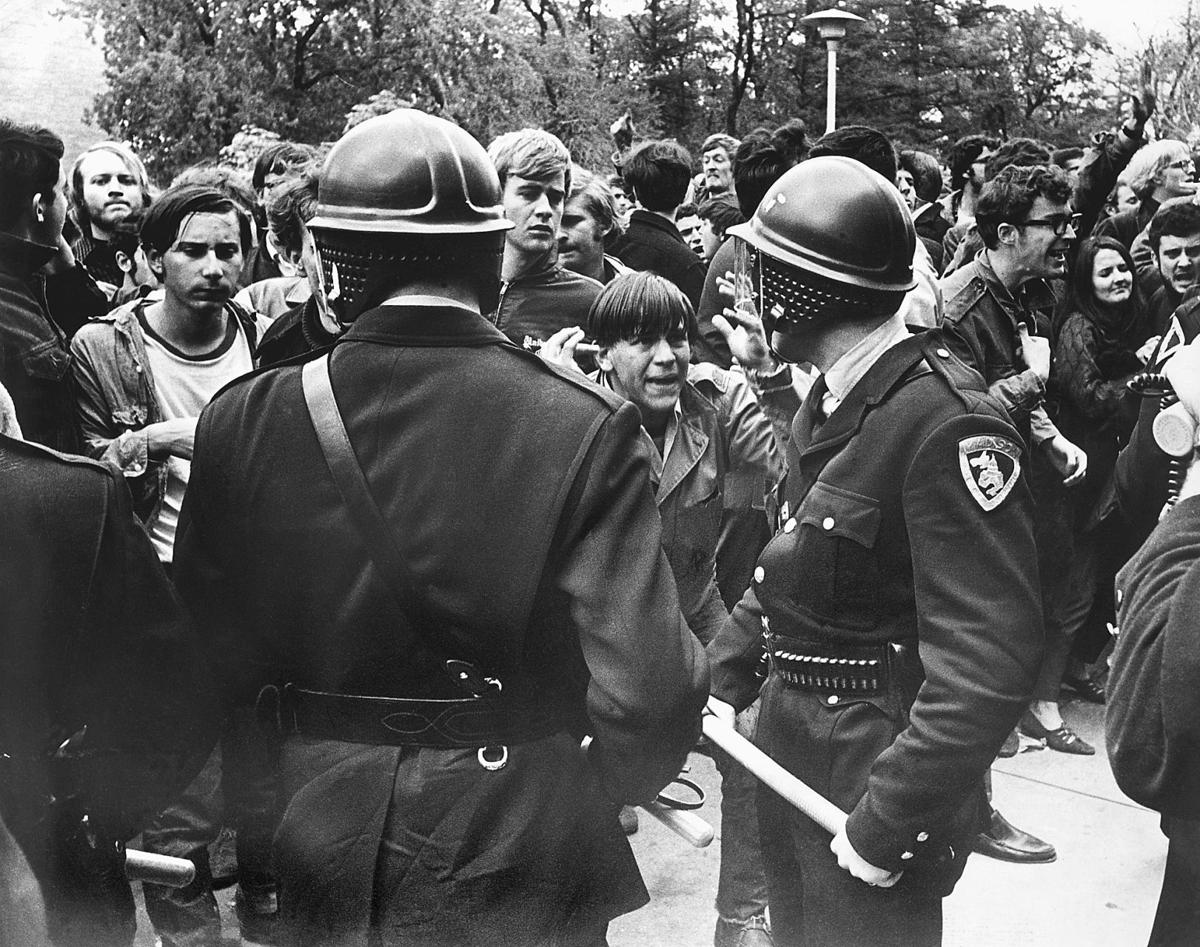
"Taunting Police," Wisconsin State Journal, October 18, 1967
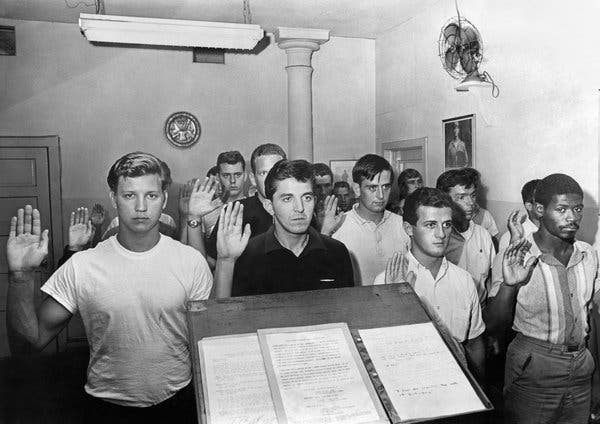
"Army Inductees Pledge Their Service in New York City," New York Times, 1965
“The University will not hesitate to invoke university discipline, including disciplinary probation, suspension, or expulsion whether or not arrests are made,” said Joseph Kauffman, the UW Dean of Students (WSJ, 17 Oct. 1967, 6). Kauffman made it clear: participating in the protests could lead to expulsion, which would likely lead to being drafted. The prospect of Vietnam scared students. Kenneth Gates, a Vietnam veteran said: “It scared the living daylights out of me that day” (Gates 9 Jan. 2018, 84). Despite these deterrents, students broke through the fear instilled by the administration to advocate for their cause.
When approached by policemen, students yelled, barely influenced by the policemen. The protesters believed that the cause they were fighting for was bigger than any individual, and so, they stood their ground.
“Each person who blocked the corridors of Commerce knew before a single club was lowered that he risked expulsion for his action. Yet he took that risk because he knew what was at stake. He knew that an effort to combat one small part of the horror his country was doing in Viet Nam took precedence over submission to an inflexible empty rule which prohibits people to block corridors.” ~ "Why Amnesty?," Wisconsin Historical Society
Unfortunately, this lack of fear hurt Madison’s anti-war movement. The students became more reckless, culminating in the 1970 Sterling Hall Bombing in which four students bombed a university research building, killing a bystander.
Stu Levitan (Historian) in discussion with authors, January 5, 2020
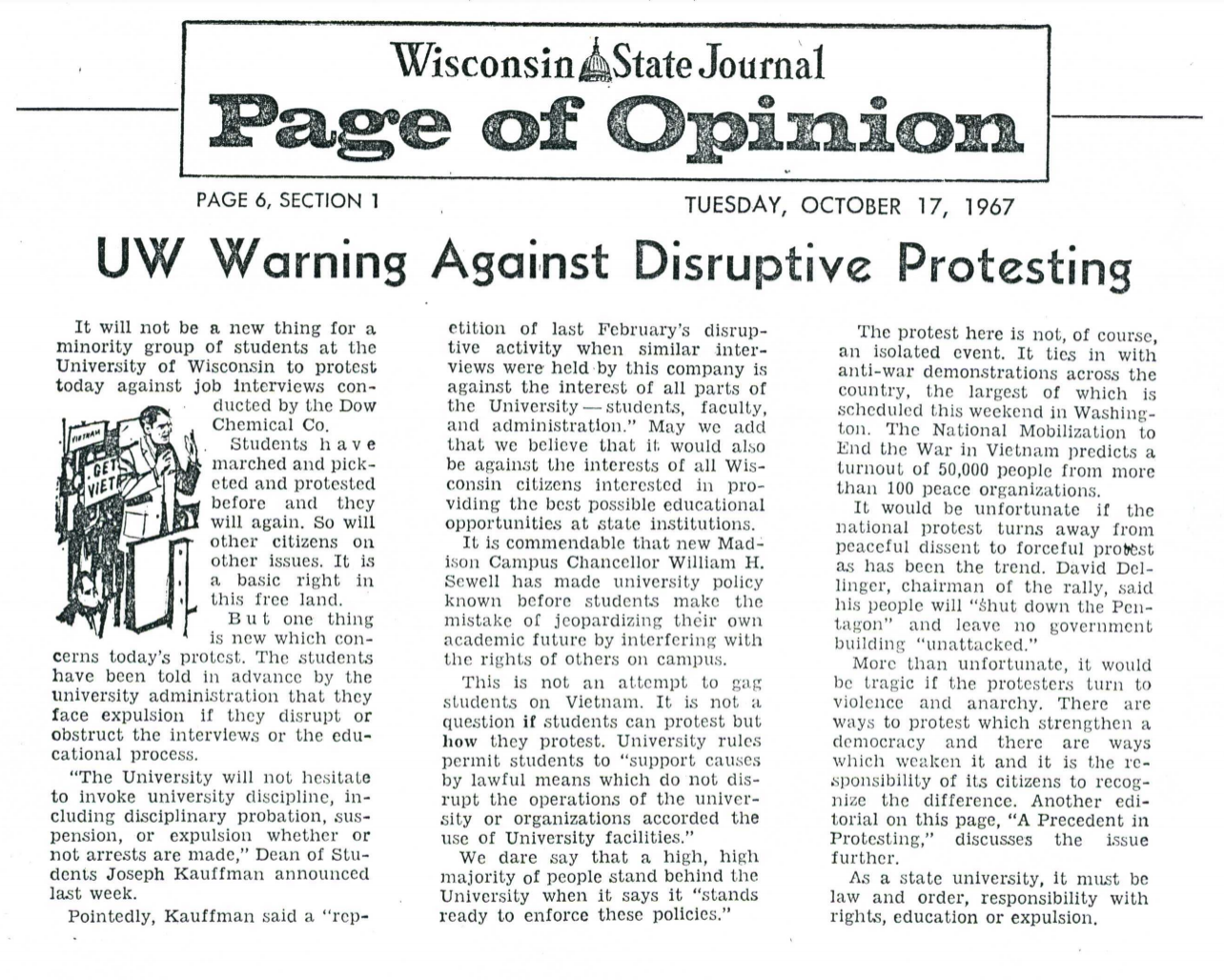
"UW Warning Against Disruptive Protesting," Wisconsin State Journal, October 17, 1967
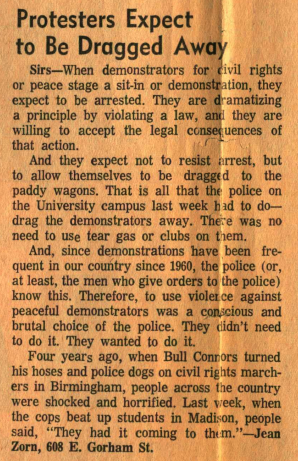
"What do YOU Say? About Campus Disorder at UW?" Wisconsin State Journal, October 27, 1967
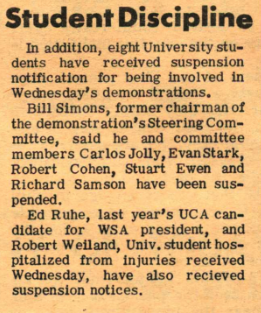
"Students Strike; Picket Campus," The Daily Cardinal, October 20, 1967

"After a Warning, the Clubs Swing," Wisconsin State Journal
IMPACT: BRINGING AN END TO THE VIETNAM WAR
Students around the country broke barriers by advocating to end US involvement in Vietnam without fearing the consequences. The message of students spread to politicians like Robert Kennedy who explained: “the first and necessary step is to face the facts. It is to seek out the austere and painful reality of Vietnam, freed from wishful thinking, false hopes and sentimental dreams. It is to rid ourselves of the 'good company,' of those illusions which have lured us into the deepening swamp of Vietnam” (Kennedy 1968). The movement heavily pressured Nixon to pull out of the war in 1973.
IMPACT: FIGHTING AGAINST POLICE BRUTALITY
Police brutality became the target of protests at UW-Madison. The brutality failed to deter protesters, and most students saw it as a form of oppression by the University. The students’ initial message disappeared as both sides began to blame the conflict on one another.
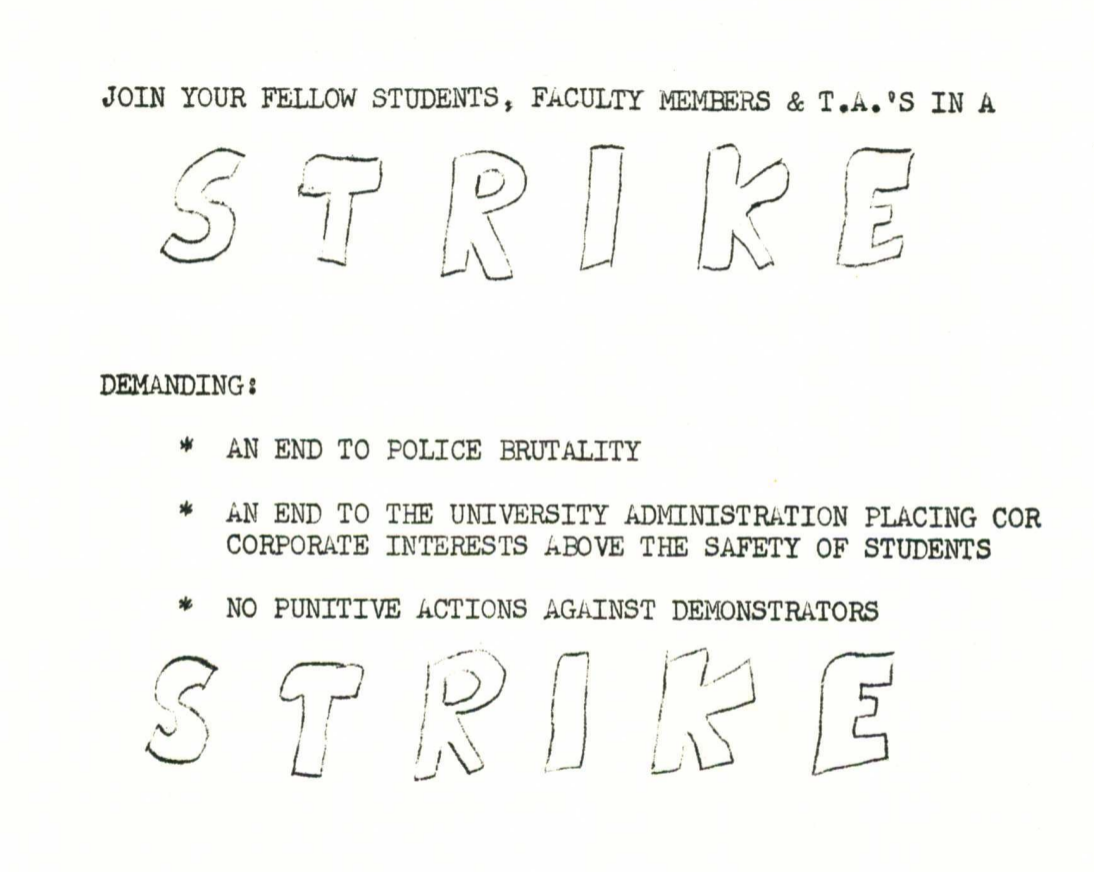
"Join your Fellow Students, Faculty Members & T.A.'s in a Strike," Wisconsin Historical Society, 1967